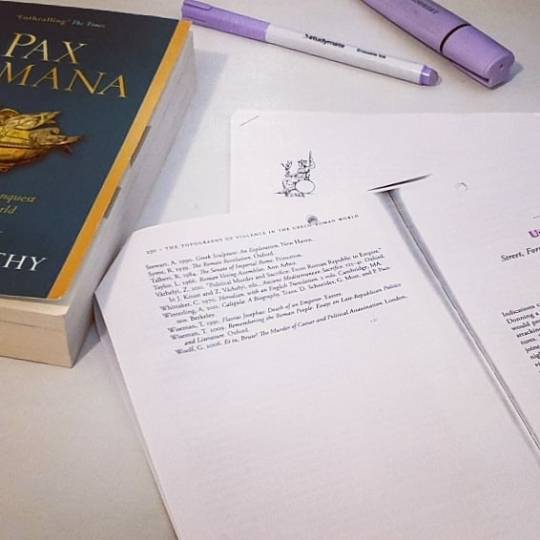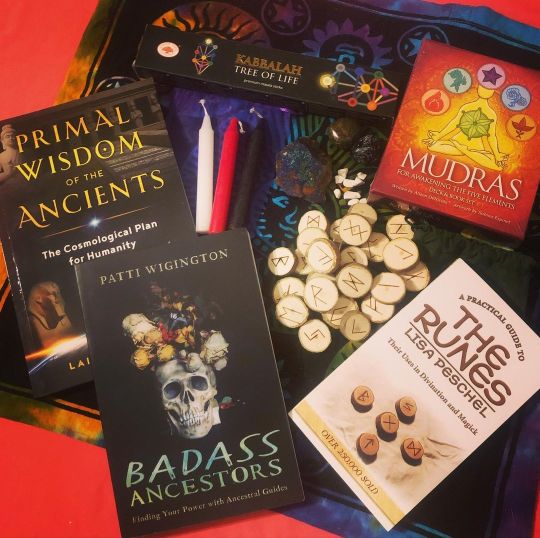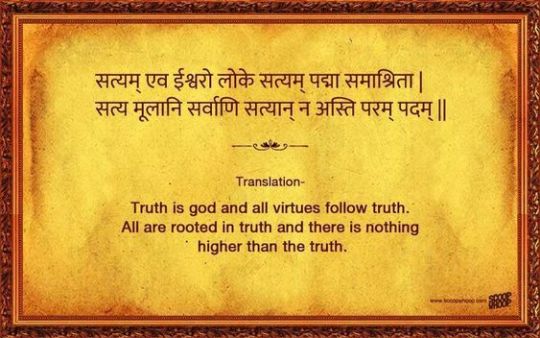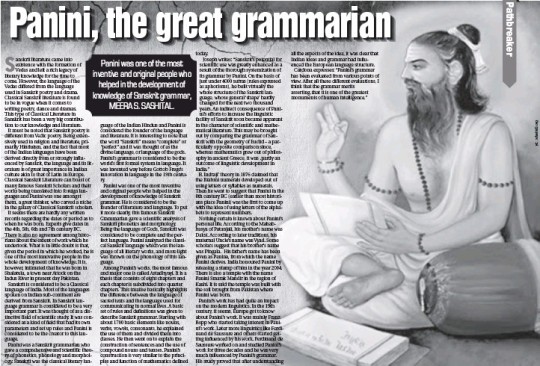#ancientlanguages
Text

4 notes
·
View notes
Text
MA In Sanskrit: Course, Fees, Admission, Syllabus, Career
The MA in Sanskrit is a post-graduate program that focuses on examining the linguistics and ancient history of India. Sanskrit, prominently known as the conventional language of Hinduism with ties to Buddhism, has its origins dating back to 1200 BCE. This language serves as the original medium for religious texts and Vedas in Indian culture, offering an extensive study of these ancient subjects.
Read More: https://skvv.co.in/ma-in-sanskrit/

#SanskritStudies#SanskritMasters#MAinSanskrit#SanskritLiterature#AncientLanguages#HumanitiesGraduate#LanguageMasters#IndianCulture#SanskritScholar#LiteraryStudies#ClassicalLanguages#CulturalHeritage#Philology#AcademicJourney#SanskritResearch#LanguageandCulture#SanskritPhilosophy#GradLife#Linguistics#ResearchInProgress
0 notes
Text
The Sound of Ancient Languages very Nostalgic
#ancientlanguages#n#indigenouslanguages#mayan#mesoamerica#kanjobal#decolonize#totonicap#anahuac#cemanahuac#quiche#nativelanguage#yucatec#mammaya#kiche#chujmaya#quanjobal#guatemala#ancient#tamil#tamillanguage#nature#travel#maya#twdglanguage#proudtobetamil#twdgtamil#tamilidentity#tamilheritage#twdgculture
0 notes
Text
#ShortVideo: One of the oldest miscarriages texts
An Akkadian text from Mesopotamia and the Babylonian civilization dating back almost 4000 years.
Follow my YouTube channel. Silent tablets documentary, short videos from ancient history.
Follow my Twitter.
#akkadian#archaeology#akkadian language#mesopotamia#ancient mesopotamia#ancient history#babylonian#ancient iraq#ancient babylonian#miscarriages#women life#daily life
2 notes
·
View notes
Text

❤️Runes map our moonths. They are the development of the soul! Ehwaz is at the start of a "feminine" month. This may be because ehwaz represents the spirit double and partnership. But it is not only a positive rune, for to need to be partner with you must be incomplete. Many close folks secretly CL take piece of us off, and then represent what completes us.
😉
I recite the Ehwaz Rune Rhyme in Old English! Equestrian originates with this Archetype!
🐎 🐎
More than anthropology I reconnect you with the Creator Gods and Goddesses that form every single thing about us in the pre-life. The path I speak of is the Nordic path of the Runes! In these videos please join me and learn the proper intonations to these traditional 'Rune Rhymes'. (Continued)
🌷🔥🌟💥⚡☀️✨
I have been trying to rebuild all my jewelry & art that was stolen when I was assaulted & robbed (many times). I am looking for a quality SPIRITUAL STORE or ART GALLERY to TRULY help & it shows! If you would like to make a connection happen contact me. If it works out I will pay you!
🌟 A very modest GoFundMe here! Please spread the word! https://gofund.me/82ac1c5b Thank you!🌟💜🗽💜🎿💜❄️💜🦌
.
.
.
.
.
.
.
.
.
.
#oldenglish
#mantra
#skyrim #Elven #gothguy
#elflanguage
#incantation
#ancientlanguages
.
.
.
.
#newageart
#witchcraftandwizardry
#spiritualart #runes #paganism #magick
#spells #pagan #wicca
#heathen #sorcery #celtic
#runestones #occultsymbols
#druid #sorcerer #metaphysical #occult #norse #germanic #pagangods #magicalsymbols #newageArt http://dlvr.it/T53xCm
0 notes
Video
youtube
Fascinating video on what Latin (I assume this means Classical Latin) would have sounded like.
#latin#lingualatina#langblr#ancientlanguages#ancientromans#roman#rome#italian#romance languages#linguist
2 notes
·
View notes
Photo

🗓67&68/100✅ . ✔8 hours translating #Livy ✔4 hours of #AncientGreek ✔3 chapters and 1 article read ✔2 hours #acwri progress . . . #classics #phdlife #phdchat #latin #latinlanguage #translation #ancientlanguages #reading #100daysofproductivity #productivity #challenge #research #study https://www.instagram.com/p/ByAoRV9Bsm1/?igshid=14mzuy67ypukr
#livy#ancientgreek#acwri#classics#phdlife#phdchat#latin#latinlanguage#translation#ancientlanguages#reading#100daysofproductivity#productivity#challenge#research#study
4 notes
·
View notes
Photo

Because knowledge is power ✨🔮✨ #MeTime #OneLove #Runes #Kabbalah #TreeOfLife #Mudras #crystalhealing #esotericknowledge #meditation #ancientlanguages #AsAboveSoBelow #SoMoteItBe 📚”Primal Wisdom of the Ancients” by Laird Scranton 📚 “Badass Ancestors” by Patti Wigington 📚 “A Practical Guide to The Runes” by Lisa Peschel 🀄️: “Mudras for Awakening the Five Elements” by Alison DeNicola 🪨: Azurite, Apache Tear, Stromatolite https://www.instagram.com/p/CRVeLmnjA9_/?utm_medium=tumblr
#metime#onelove#runes#kabbalah#treeoflife#mudras#crystalhealing#esotericknowledge#meditation#ancientlanguages#asabovesobelow#somoteitbe
0 notes
Video
youtube
Gone too soon, 💎 Kelly Fraser. R.I.P.
0 notes
Photo

“The stolen codex” Have you ever wonder how humans came to speak? I think we had a little help from this nahual who stole the gods codex and gave it to us so we may communicate with each other but even on our own imperfect way words still are powerful. So let's mind our words because once said you can't take them back. ¿Alguna vez te has preguntado cómo los humanos llegaron a hablar? Creo que tuvimos un poco de ayuda de este nahual que robó el códice de los dioses y nos lo dio para que podamos comunicarnos entre nosotros, pero incluso en nuestra manera imperfecta, las palabras siguen siendo poderosas. Así que cuidemos nuestras palabras porque una vez dichas no puedes retractarte. #stolen #codex #codice #robado #godswords #fox #zorro #renard #fuchs #neomexicanismos #artemexicano #mexicanart #milkalolo #palabras #lenguaje #sagrado #ancientlanguage #mitologia #mesoamerican #mythology #latinamericanart #womanartist #alebrijes #chaman #shamanism #sacred #words #mexicanfolklore #nahual https://www.instagram.com/milka.lolo/p/CZILOgFuol3/?utm_medium=tumblr
#stolen#codex#codice#robado#godswords#fox#zorro#renard#fuchs#neomexicanismos#artemexicano#mexicanart#milkalolo#palabras#lenguaje#sagrado#ancientlanguage#mitologia#mesoamerican#mythology#latinamericanart#womanartist#alebrijes#chaman#shamanism#sacred#words#mexicanfolklore#nahual
9 notes
·
View notes
Photo

"The Brotherhood Database" illustration for the Demon Hunter RPG book I did. www.demonhuntersrpg.com #demonhuntersrpg #database #cyberscribe #ancientlanguages #oldpc (at Thousand Oaks)
1 note
·
View note
Photo

Whatsapp Contact. +923028104765 #universityofcambridge #universitystudent #assignmentwriting #thesiswriting #essaywriting #subject #aerospaceengineering #aerothermalengineer #akkadian #anatomy #ancientlanguage #ancient #anthropology #arabic #archaeology #architecture #arthistory #assyriology #astrophysics #biologicalscience #biology #biomedicalscience #botony #chemicalengenering #chemistry #chinese #studenthelp (at University of Cambridge) https://www.instagram.com/p/CSpoHkFskly/?utm_medium=tumblr
#universityofcambridge#universitystudent#assignmentwriting#thesiswriting#essaywriting#subject#aerospaceengineering#aerothermalengineer#akkadian#anatomy#ancientlanguage#ancient#anthropology#arabic#archaeology#architecture#arthistory#assyriology#astrophysics#biologicalscience#biology#biomedicalscience#botony#chemicalengenering#chemistry#chinese#studenthelp
1 note
·
View note
Text
संस्कृत - Sanskrit
The relationship between culture and language is an intimate one, for language is the vehicle of human thought. Language determines a culture’s worldview.
As language changes, so religion changes. In the case of Hinduism, Sanskrit stood for millennia as the carrier of Vedic thought before its dominance gradually gave way to the vernacular languages that eventually became the modern day languages of India: Hindi, Gujarati, Bengali, Telugu, Kannada, and so on. Although the foundations of Hinduism are largely built on the vocabulary of Sanskrit, these modern languages are now the primary carriers of Hindu thought within India.
Sanskrit is regarded as the ancient language in Hinduism, where it was used as a means of communication and dialogue by the HinduCelestial Gods, and then by the Indo-Aryans. Sanskrit is also widely used in Jainism, Buddhism, and Sikhism. The term ‘Sanskrit’ is derived from the conjoining of the prefix ‘Sam’ meaning ‘samyak’ which indicates ‘entirely’, and ‘krit’ that indicates ‘done’. Thus, the name indicates perfectly or entirely done in terms of communication, reading, hearing, and the use of vocabulary to transcend and express an emotion. An extraordinarily complex language with a vast vocabulary, it is still widely used today in the reading of sacred texts and hymns.
BIRTH OF SANSKRIT -
The Sanskrit language was termed as Deva-Vani (‘Deva’ Gods - ‘Vani' language) as it was believed to have been generated by the god Brahma who passed it to the Rishis (sages) living in celestial abodes, who then communicated the same to their earthly disciples from where it spread on earth. The origin of the language in written form is traced back to the 2nd millennium BCE when the Rig Veda, a collection of sacred hymns, is assumed to have been written after being continued for centuries through oral tradition and preservation of verbal knowledge in the Guru-Disciple relationship. The purity of this version (Vedic period, 1500 – 500 BCE) of Sanskrit is doubtlessly reflected in the flamboyance of the perfect description of the forces of nature in the Rig Veda.

( ~ a sanskrit quote on life.)
VEDIC SANSKRIT
Sanskrit in terms of its literary association is classified into two different periods, the Vedic and Classical. Vedic Sanskrit is found in the Vedas sacred texts, especially the Rig Veda, the Puranas, and the Upanishads, where the most original form of the language was used. The composition of the Vedas is traced to the period of 1000 to 500 BCE, until when Sanskrit had a vigorous tradition of being used consistently through oral communication. This early Sanskrit is rich in vocabulary, phonology, grammar, and syntax, which remains undiluted in its purity to this day. In all, the language is like an endless ocean without a base due to its reach, complexity, and hundreds of words to express a single meaning or object.

CLASSICAL SANSKRIT - ASHTADHYAYI
Classical Sanskrit has its origin in the end of the Vedic period when the Upanishads were the last sacred texts to be written down, after which PANINI, a descendant of Pani and a grammar and linguistic researcher, introduced the refined version of the language. Panini’s timeline is assumed to be around the 4th century BCE, when he introduced his work ‘Ashtadhyayi’, which means eight chapters, forming the only available foundational and analytical text of Sanskrit grammar. It is considered to be the only source of Sanskrit grammar and vocabulary today, because everything that existed before had never been recorded except via their mention in Panini’s Ashtadhyayi.

(~ A newspaper article on the great Sanskrit Linguistic - PANINI .)
The language is so vast that it has more than 250 words to describe rainfall, 67 words to describe water, and 65 words to describe earth, among other descriptions. This proves the magnanimity of Sanskrit when compared with current modern languages. However, different the sub-castes of Hinduism may be in their dialect, race, creed and rank - Sanskrit is considered and accepted as the only sacred language giving rise to the only available sacred literature by all, even though India has a repository of 5000 spoken languages. Panini was responsible for the standardisation of the language, which to this day remains in use in multiple forms. Sanskrit as a spoken language is rare and is spoken in some regions in India, some even claiming it as their first language, but it is proudly mentioned as one of the 14 original languages of India in its Constitution. It is largely used in Carnatic music in the form of bhajans, shlokas, stotras, and kirtanas, all indicating various hymns to the Gods, and songs and mantras of God worship.
INFLUENCE ON OTHER WORLD LANGUAGES
Sanskrit has had a major impact on other Indian languages, such as Hindi, which is presently one of the official languages of India, and Indo-Aryan languages such as Kannada and Malayalam. Thailand and Sri Lanka has been enormously influenced by Sanskrit and have many similarly sounding words. The Javanese language is another which has been influenced by Sanskrit, along with the modern language of Indonesia and traditional language of malay spoken in Malaysia. Filipino has a minor influence from Sanskrit, but less than that from Spanish, for example.

In the last century a new phenomenon has been occurring. Hinduism has begun to emerge in the West, and as Hinduism expands into the West, the emerging forms of this ancient tradition are naturally being reflected through the medium of Western languages, the most prominent of which is English.The differences between the Indian regional languages and Sanskrit are minuscule when compared to the differences between a Western language such as English and Sanskrit. English, the current modern international language has also been influenced by Sanskrit and has picked up many loanwords from the ancient language (for example 'primitive' from 'prachin', meaning historical, 'ambrosia' from 'amaruta' meaning food of the Gods, 'attack' from 'akramana' meaning taking aggressive action, 'path' from 'patha' meaning road or way, 'man' from 'manu' meaning a male human, 'nirvana' from 'nirvan' meaning divine liberation or transcendence, 'door' from 'dwar' meaning a doorway connecting two spaces, ''serpent' from 'sarpa' meaning snake, etc.) since both are considered as Indo-European languages.
The Sanskrit language has been the traditional means of communication in Hinduism, Jainism, Buddhism, and Sikhism. Sanskrit literature holds the privilege of being used in ancient poetry, drama, and sciences, as well as religious and philosophical texts. The language is believed to have been generated by observing the natural progression of sounds created in the human mouth, thus considering sound as an important element of language formation. This is one of the prime reasons why Sanskrit has been rich in poetry and its expressive quality of bringing out the best meaning through perfect sounds that are soothing to the human ear.
BUT WHY IS SANSKRIT KNOWN AS THE LANGUAGE OF GODS ? Come to know about the same by following our upcoming posts on the same subject.stay tuned !
98 notes
·
View notes
Text
#ShortVideo: 4000 years old letter
A letter from Son to his Mom. from Ancient Mesopotamia, Babylonian, Found in Iraq
Follow my YouTube channel. Silent tablets documentary, short videos from ancient history.
Follow my Twitter.
#mesopotamia#ancient mesopotamia#archaeology#akkadian#semitic languages#akkadian language#babylonian#ancient babylonian
0 notes
Text
So I translated “House of Gold” into Latin
It goed like this:
Rogabit: “Fili, ut senescam emes me domum auri? Utque pater vertet saxo, tu curabis me?”
I know it’s only the chorus, but it fits into the ritm and it took me a long time to translate it
It made me question life again
#josh dun#trench#tyler joseph#twenty one pilots#top#blurryface#twenty øne piløts#bandito#twentyonepilots#vessel#banditotour#fren#frens#houseofgold#latin#studentlife#ancientlanguage#deadlanguage#jennajoseph#joshuasun#clique#skeletonclique
26 notes
·
View notes
Text
Learn Ancient Languages!
Currently, learning ancient/medieval languages is the preserve of university scholars, to be read by a select audience. In this post, I argue that all linguists should have an active interest in older forms of their target languages.
Older forms of your target language demonstrate the genesis and development of that language. In being aware of these forms, you will have a better understanding of the modern version, as well as the major differences.
In addition, many groundbreaking texts in your target language were written in older forms. This is why I advocate studying other topics in your target language(s), and this could be considered a gateway to studying the historical texts. While modernised versions of the language are useful, the true linguist does not depend on these. Rather he compares between the older and the modern version and deduces the development of the language.
When I began studying the music of Guillaume de Machaut (1300- ca.1377), I was brought into contact with Ancien Français. Fortunately, with a modest level of French I could recognise significant differences and connections with the modern language. After an unnecessary hiatus, I intend to read musical texts in Ancien Français and understand the grammar, which I will compare with the modern language.
While many people who study Ancient Languages are university scholars, I do not see why this subject should be confined to academic halls. Do you, in fact, need an advanced understanding of your target language before examining texts in older forms? Not necessarily. My French was nowhere near as good as today when I began reading de Machaut’s poems. Of course, I did not understand everything, but the exposure did improve my understanding of root words, etymology, and spelling in modern French.
Furthermore, you do not have to reach back into the Middle Ages or beforehand. Language constantly evolves and the language of a century ago, even up to 500 years, is sufficient for study. I have a copy of Gargantua by François Rabelais (link contains English translation: my copy is in French), written in «Moyen Français». This is far more accessible than Machaut’s French, and the older French of Bataille Loquifer (written in the 12th century).
You do not have to become fluent in these older forms, although I think this offers many great benefits. For example, you could publish a work explaining the development of vocabulary in your target language-- always aim for more than just ordering a coffee or booking a room. But even without fluency, you can compare, contrast, learn new vocabulary, examine the spelling, understand the grammar, refine your understanding of syntax, as well as enjoying classical texts.
Most of all, studying older languages requires the same curiosity, deduction, and synthesis that is required for studying any foreign language. Don’t settle for studying a foreign language just to remember foreign words. Foreign languages are not just a means of communication, but a means of thinking. Languages contain culture and philosophy. Go beyond the printed page and ask questions. Where did these words come from? How did this syntax develop? When was the grammar standardised and why?
Studying older forms of the language helps answer these questions.
If you do intend to study for a degree in a foreign language, why wait until university begins before widening your reading? Personally, I intend to study Ancien Français, Mittelhochdeutsch, Church Slavonic, and Biblical Hebrew.
I will discuss more on this topic in future.
Consider studying older versions of your target languages today.
#ancientlanguages#medievallanguages#ancienfrançais#mittelhochdeutsch#biblicalhebrew#ancientgreek#churchslavonic#classicalarabic#oldlanguages#latin#greek#hebrew#arabic#russian#french#german#english#langblr#foreignlanguages#linguist#bilingual#multilingual#language#languagehistory#exophonic#exophonicwriting#exophonicwriter
2 notes
·
View notes